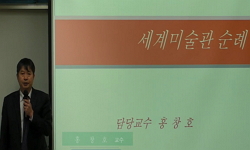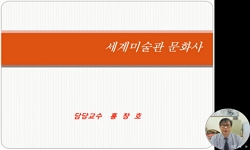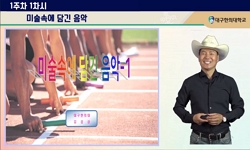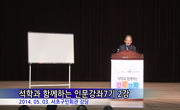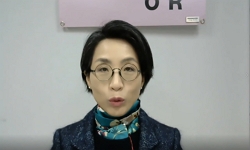미술은 개항후 근대국가 건설을 위한 각종 제도시찰의 과정에서 처음 소개되었으며 현재의 예술개념으로 일반화되기까지는 사회적, 역사적 과정을 통해 이루어졌다. 개항 후 맞게 된 국가...
http://chineseinput.net/에서 pinyin(병음)방식으로 중국어를 변환할 수 있습니다.
변환된 중국어를 복사하여 사용하시면 됩니다.
- 中文 을 입력하시려면 zhongwen을 입력하시고 space를누르시면됩니다.
- 北京 을 입력하시려면 beijing을 입력하시고 space를 누르시면 됩니다.
한국 근대기 미술의 제도화 과정 연구 : 개항후 한일합방까지를 중심으로 = The Systematization of the Fine Art in Korean Modern Period : Mainly From Open-port to the Japanese annexation of Korea
한글로보기https://www.riss.kr/link?id=T11469954
- 저자
-
발행사항
서울 : 한국예술종합학교 미술원, 2005
-
학위논문사항
학위논문(예술전문사)-- 한국예술종합학교 미술원 : 미술이론과 2005. 8
-
발행연도
2005
-
작성언어
한국어
- 주제어
-
발행국(도시)
서울
-
형태사항
vi, 135 p. ; 26cm
- 소장기관
-
0
상세조회 -
0
다운로드
부가정보
국문 초록 (Abstract)
미술은 개항후 근대국가 건설을 위한 각종 제도시찰의 과정에서 처음 소개되었으며 현재의 예술개념으로 일반화되기까지는 사회적, 역사적 과정을 통해 이루어졌다. 개항 후 맞게 된 국가적 위기상황 속에서 새로운 제도 도입을 통한 근대국가로의 변화가 모색되었고 이런 사회 변혁의 과정과 미술의 제도화 과정은 상당부분 겹쳐져 있다. 미술의 제도화 과정은 역사적으로 우리나라가 근대성을 획득해 가는 과정을 보여줌은 물론, 미술이 새로운 지식개념으로서 국가 정책으로 공식화되고 대중에게 유포, 내면화되어 당대의 시각체계로 수렴되는 지점을 보여준다. 또한 미술은 담론적, 제도적, 사회적 관계들로 이루어진 그물망 위에 새롭게 기입되기 시작한 표상체계이자 의미요소로 기능하였다.
본 논문은 ‘본다’는 것이 생리적인 지각과정의 차원을 넘어서서 사회적이고 문화적이며 역사적으로 구조화되고 조건 지워지는 과정임을 전제로 하여 미술의 제도화 과정을 분석하였다. 이것은 미술이 대중에게 새로운 시각경험으로 제시되고 나아가 근대적 지식체계로 내면화되면서 공식화되는 과정에 대한 것으로 개항 후 급격한 신구교체기(新舊交替期)의 역사적 환경, 사회적 조건들에 대한 실증적이고 면밀한 고찰이 필수적이었다. 따라서 당대의 지식사회에서 벌어졌던 지적, 개념적 논쟁 등 당대의 담론사항과 문헌검토를 통하여 미술이 근대적 지식개념의 맥락에서 논의되고 내면화되는 과정에 강조점을 두었다.
우리나라에서 ‘미술’ 용어의 소개는 1881년 근대적 제도시찰을 위해 일본으로 파견되었던 ‘조사시찰단(朝士視察團)’의 시찰 보고서에서 발견되었는데 보다 구체적으로는 농상무성의 조직과 기능을 시찰했던 박정양의 보고서에서 그 최초 용례가 보인다. ‘미술’, ‘미술관’, ‘박람회’등의 용어가 국가 산업진흥을 담당하였던 농상무성의 시찰기에서 사용된 점은 ‘미술’이 근대적 제도모색의 과정에서 소개되었음을 뒷받침해 주며 식산흥업(殖産興業)의 국가시책으로 도입되어 산업발전을 위한 국가적 코드가 강하게 견지되고 있음을 보여준다. 또한 ‘보는 것’을 통해 국민을 새롭게 계몽할 수 있다는 공리적 목적으로 미술이 나라를 부강하게 하는 기술(富國之術)이자 근대적 국가 이미지를 적극적으로 보여주는 새로운 표상체계로서 그 제도적 인증성을 확보해나가기 시작하였다.
특히, 박람회나 박물관 같은 가시성의 공간은 ‘보는 것’을 통한 계몽의 장이자 이전과는 다른 방식으로 사물을 시각화하고 역사화 하는 새로운 시각문화의 장을 형성하기도 하였다. 또한 만국박람회(萬國博覽會)같은 대규모 국제행사에의 참가는 해외 선진문물을 견문하고 대외적으로 조선이 독자적 문화와 역사를 지닌 자주국임을 알리는 외교적 수단으로 예술과 문화를 인식하였던 당대의 예술인식의 한 지점을 보여주기도 한다. 최초의 공식적인 참가를 기록한 시카고 만국박람회(1893)는 국가간, 문명권간 권역 배치를 통해 ‘문명’과 ‘야만’, ‘서구’와 ‘비서구’, ‘발전’과 ‘지체(遲滯)’의 세계상(世界像)을 시각적으로 각인한 이벤트였다. 이제껏 박람회에 참가경험이 전무했던 조선 정부로서는 그 의욕적 참가와는 달리, 체계적으로 국가 이미지를 대외에 알리기에는 역부족이었다.
시카고 박람회에서의 경험을 토대로 이후의 파리 만국박람회(1900)에서는 보다 체계적이고 조직적인 참가가 이루어진다. 즉 파리와 서울에서 각각 박람회 관련 업무를 전담할 박물국(博物局)을 조성하고 서울에서 박람회 출품물에 대한 수집이 이루어지는 한편, 파리에서는 ‘대한제국관’ 건립이 추진되는 등 이원화된 박람회 준비가 이루어진다. 특히 파리에서 실질적인 박물국 사무를 총괄했던 드로르 드 글레옹(Delort de Gléon, 都蔚陶) 남작의 ‘대한제국관’ 설립계획은 공식적인 국가관 건립과 비공식적인 이벤트로 구성된 대규모 전시계획이었다. 그러나 남작의 갑작스런 죽음으로 초기의 의욕적인 건립계획은 축소된 형태로 공식적인 국가관 전시만 이루어지게 된다.
우리나라의 만국박람회 참가경험은 도달해야할 목표로서 문명화, 근대화에 대한 필요성을 절감하게 하는 계기가 되었고 국내에서도 산업발전과 대중계몽을 위한 장치로서 국내박람회 시행과 왕실 박물관 건립이 도입된다. 1907년 ‘경성박람회’가 개최되는데 서울 동현(銅峴)에 위치한 대동구락부(大東俱樂部)가 본 전시장으로 사용되고 남대문과 동대문에 상품진열소가 설치되는 등 서울시내 전역에서 치러진다. 전국에서 올라온 특산품이 상품진열소에 품목별로 진열되고 전시품은 농수산물부터 정교한 세공품들, 각종 진기한 물건들과 역사적 유물, 예술품과 외국물품에 이르기까지 당시로선 새로운 시각적 볼거리였다.
한편, 왕실 박물관은 1908년 어원사무국(御苑事務局)이 설치되면서 동물원 및 식물원과 함께 그 설립이 모색된다. 왕실 박물관이 위락시설과 함께 설치되었다는 점과 소장품 수집 과정에서 도굴품도 상당수 유입됨은 물론, 전통적으로 왕실에서 수장해오던 각종 서화류와 전
다국어 초록 (Multilingual Abstract)
The fine art was firstly introduced to korea in the process of inspecting foreign institutions for building a modern nation after Open-port and has been generalized as a social and a historical notion of art. The systematization of the fine art is mos...
The fine art was firstly introduced to korea in the process of inspecting foreign institutions for building a modern nation after Open-port and has been generalized as a social and a historical notion of art. The systematization of the fine art is mostly overlapped a process of social changes toward the modern nation through trying to apply new institutions to whole korean society. Thus, the systematization of it shows not only a process of acquiring the modernity but also a convergence to erect the visual regime in Korean society. This dissertation set forth beforehand that 'Seeing' is not a mere physiological perception but the socially, culturally and historically conditioned activities. Therefore, it is essential to analyze historical environments and social conditions of korea during the conflict period between the old and the new idea after Open-port. It is also fundamental to examine the discourses of the intellects and primary references in those days for the contextual discussion of the fine art.
The first use of the word 'Fine Art' was in a formal report of Chosun official group for inspection(朝士視察團) of Japanese modernized social system in 1881. Newly translation words such as 'Fine Art', 'Museum' and 'Exposition' which was appeared in the report related to agriculture-commercial business meaned that the fine art was introduced as a part of industrial promotion policies and as a kind of institution for enlighten the people. The fine art was contextualized notion through the national code of 'civilization(文明)' or 'industry promotion(殖産興業)', or 'developing powerful nation(富國强兵)' in those days.
From the beginning of the introduction, the notion of fine art is equivalent to the modern art because of its new word, new notion and new function of 'Seeing'. The visual-oriented spaces such as exposition and museum were also introduced in Korea as a enlightenment mechanism and it formulated the modern visual culture through collecting, classifying and visualizing the things. Korean government participated in the world exhibition in order to observe the modernized western world and to announce Korea's autonomy in international society. It has been known that the world exhibition was the cultural-political event of constituting the world image in a symbolic way such as civilization versus savagery, the western versus the non-western and the development versus the delay. The first official participation in the World's Columbian Exposition held in Chicago in 1893, and in the Exposition Universelle de 1900 of Paris were the experiences to realize the civilization and the modernization a nation as the goal to achieve.
A national fair was held in Kyonsung in 1907 and royal museum -so-called Yi-Wang-Ga Museum(李王家博物館)- was built in 1909 in the pursuit of developing modern nation. Although these activities were firstly adapted to Korea for constructing modern visual institutions, the driving forces of it were mostly under the Japanese colonial power due to dissolve Korea's sovereignty after Eul-sa Treaty(乙巳條約). For example, royal museum was established with the plan for a botanical garden and a zoo in royal palace and its collection policy didn't succeeded to the legacy of royal collection.
The systematization of the fine art is constantly advanced by the execution of national education system and by the production system in modern craft as a industrial art. Considered with national education system, 'painting(圖畵)' and 'handi-craft(手工)' were arranged as the subjects related to the fine art and 'the national inheritance school for industry(官立工業傳習所)'(1907) was established so that 'design(圖案)' education was introduced to the modern craft scene. This school took a role to permeate modern craft among the publics through research association, public lectures and the magazine.
The modern craft in those days showed the amalgation of the fine art with industry in the craft production structures. It was also the barometer of changes such as getting out of traditional production system, appling new manufacture system and the changes of craftsmen in that period. 'Han-sung fine art's factory(漢城美術品製作所)'(1908) was established by royal executive bureau as a substitute for 'Bun-won(分院)' which had been producted craftworks for royal family in a traditional way. This factory not only functioned as a symbol of new manufacture system for modern craft culture but also showed a transit point from a traditional handiworks' system to modern crafts' mass production system. It is also remarkable that a department of design, 'Doan-sil(圖案室)' was established in the factory for a general design plan of production.
Moreover, the fine art was arranged as the new 'knowledge' through a education system and a dissemination of enlightenment discourses. The 'vision(視覺)' or 'way of seeing' was also newly emphasized factor in the systematization of the fine art. Especially displaying the things or arranging 'founding world' in the form of displayed items was a systematic factor to reinforce the specific national images to the publics. This means that there are not only the specific gaze which has been constructed in the public visual regime but also the specific reforestation system which has constructed modern national images by the visual devices. For example, a nation is represented by a visual device such as the national flag and various national ceremonies and royal emblem were used as a means for raising national images and people's solidarity.
Modern period of Korea mainly from Open-port(開港) to the Japanese annexation was the extremely confusional period. The systematization of the fine art proceeded in this collision period between the old and the new idea. Therefore, studying on this theme is inevitably to examine how the notion of the fine art was transformed in the social, historical and discourse contex
목차 (Table of Contents)
- I. 머리말 1
- II. 계몽담론을 통한 미술개념의 형성 7
- 1. 문명개화와 식산흥업으로서의 예술론 7
- 2. 근대적 제도로서의 미술인식 21
- III. 근대적 시각경험과 미술제도 도입 36
- I. 머리말 1
- II. 계몽담론을 통한 미술개념의 형성 7
- 1. 문명개화와 식산흥업으로서의 예술론 7
- 2. 근대적 제도로서의 미술인식 21
- III. 근대적 시각경험과 미술제도 도입 36
- 1. 만국박람회 참가와 국가관 건립 36
- 2. 국내 박람회 시행과 왕실 박물관 건립 52
- IV. 근대화 정책으로서 미술의 제도화 과정 65
- 1. 전문 교육기관의 설립 65
- 2. 한성미술품제작소와 평양자기제조주식회사의 설립 75
- V. 미술의 제도화 기능과 그 의미 85
- 1. 근대적 국가 이미지의 표상화 85
- 2. 근대적 지식과 시각문화의 확산 93
- VI. 맺음말 103
- 참고문헌 108
- 영문초록 132





